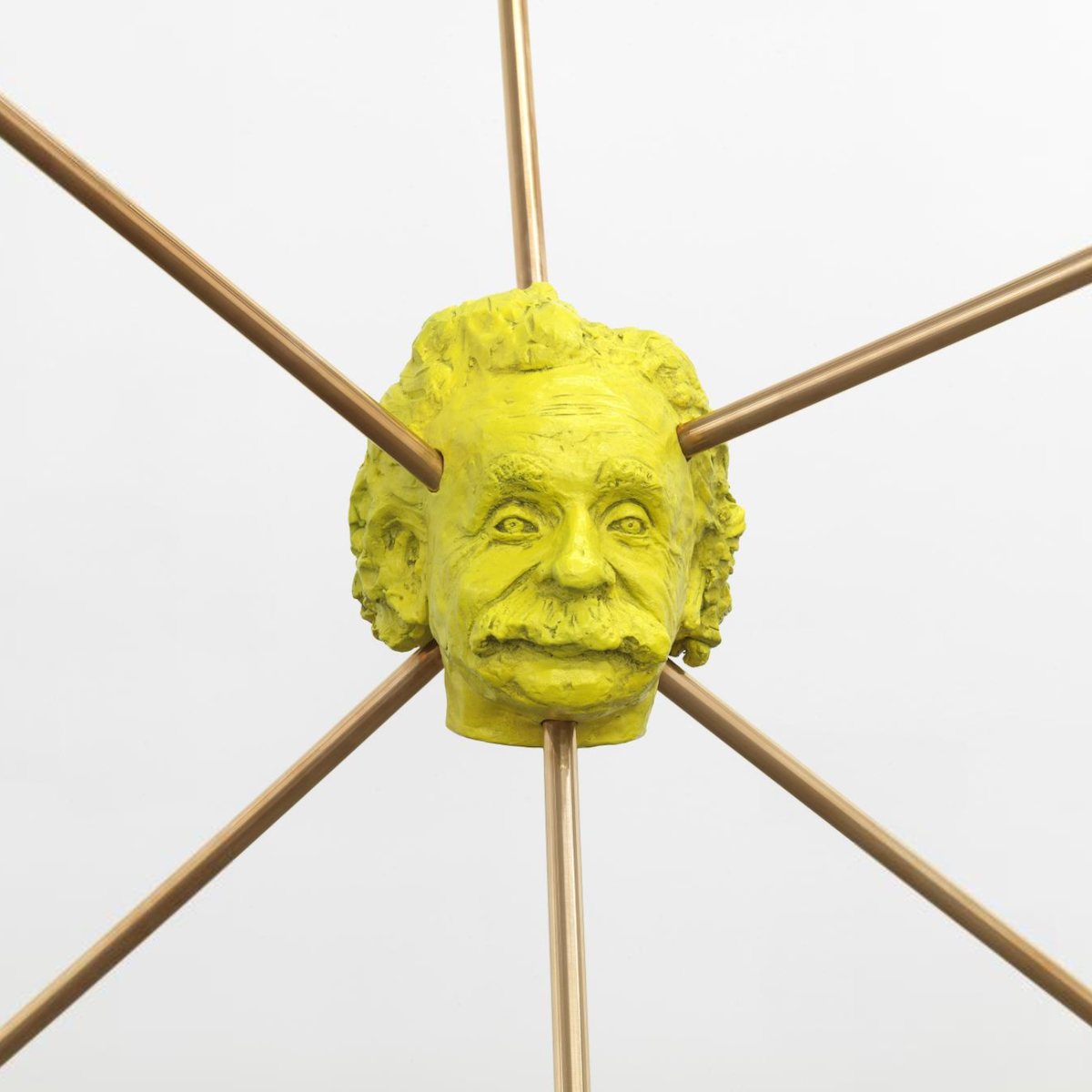
Goshka Macuga, International Institute of Intellectual Co-operation, Configuration 30, End of Time: Andrei Linde, Albert Einstein, Wolfgang Pauli, Paul Crutzen, Carlo Rovelli, Ibn Khaldun, Jared Diamond (detail), 2016. Bronze, 113 x 138 x 118 in.
Iconoclastic
Image Gallery Exhibition FileJanuary 31 - April 28, 2017
Artist Talk: Friday, February 24, 6pm, Psychology 105
Conversation with Ryan Woodring, followed by a reception at the Cooley. Additional public programs in March and April will be announced separately.
Iconoclasm, the purposeful destruction and censorship of images and representational objects, and aniconism, the refusal to produce images, are recurring phenomena throughout the history of art. Long neglected by art historians, their study is now considered central to the understanding of the historical function of images. Prominent examples of iconoclasm and aniconism across time include: the ancient practice of destroying the monuments of previous rulers; the prohibition on images in the Hebrew Bible; Christian iconoclasm in medieval Byzantium and in the wake of the Protestant Reformation; state-sponsored destruction of images during the French and Russian revolutions and the Nazi era; vandalism; contemporary attempts to censor the visual arts; and the draining of iconographic power in neoliberal capitalism. Recent examples of iconoclasm include the destruction of religious shrines and monuments in the Middle East, such as the Monumental Arch of Palmyra in Syria in March 2016. Various western groups have worked to virtually preserve and reconstruct such monuments by means of anastylosis and 3D modeling—confronting iconoclasm through data collection and remediation.
How has the experience and understanding of historical and contemporary forms of iconoclasm and aniconism been transformed in the context of a world rife with humanitarian, political, and environmental crises? Intentionally subverting, manipulating, and destroying images has played a critical role in artists’ ability to confront corruption and oppression. The destruction and absence described in past histories of iconoclasm must be expanded to consider the phenomenon in relationship to the global circulation and suppression of images and information that establish and transmit ideologies of the image, particularly in the more hidden dimensions of archives, corporate culture, and digital networks.
The artists in Iconoclastic examine the ideological construction, imagistic confusion, erasure, and physical destruction of works of art, cultures, nature, and the art historical canon. Works include sculpture, large-scale installation, video, film, sound, poetry, performance, and photography.Iconoclastic features work by Morehshin Allahyari and Daniel Rourke, Demian DinéYazhi´, Maya Lin, Goshka Macuga, Michael Rakowitz, and Ryan Woodring.
The exhibition is curated by Stephanie Snyder, John and Anne Hauberg Curator and Director, Douglas F. Cooley Memorial Art Gallery, and William J. Diebold, Jane Neuberger Goodsell Professor of Art History and Humanities, Reed College.
